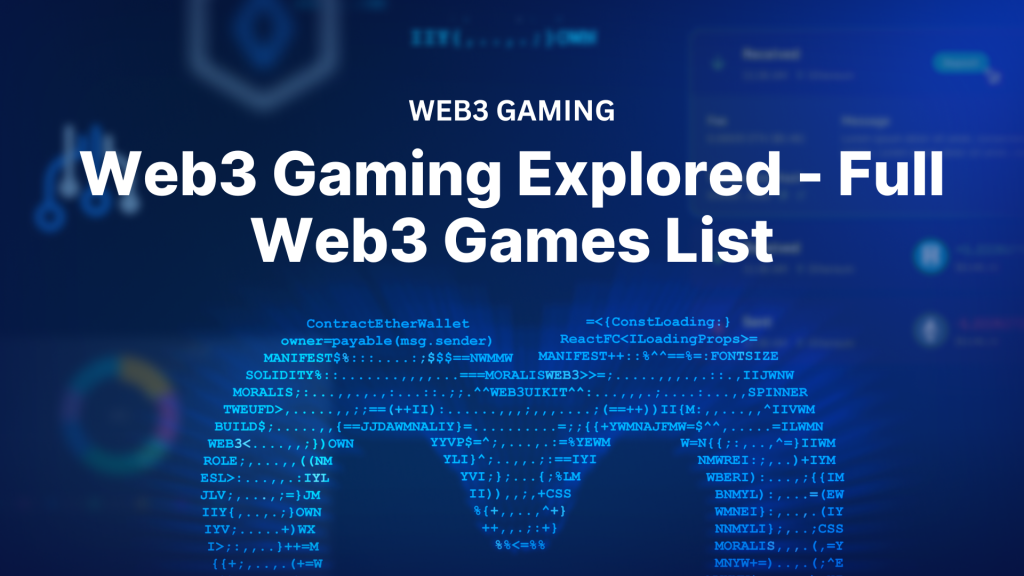
While Web3 gaming is a relatively new industry, it has already established itself with a substantial market size, reaching almost $7.9 billion in 2023. Estimates project an impressive compound annual growth rate (CAGR) of approximately 68%, forecasting that the industry has the potential to exceed $300 billion by 2030. This clearly highlights the potential of Web3 gaming, and there’s no better time than now to dive deeper into this sector. So, if you’re interested in familiarizing yourself with it, read on as we dive into the intricacies of Web3 gaming!
Overview
In today’s article, we’ll kick things off by diving straight into Web3 gaming. In doing so, we’ll explain what it is and how it works. From there, we’ll compare Web2 and Web3 gaming to highlight the differences between these two sectors. Next, we’ll cover the market size of the Web3 gaming industry to highlight its potential. From there, we’ll dive into a list of 25 popular Web3 games and cover the top three platforms in further detail. Lastly, to top things off, we’ll explore Moralis’ Web3 API suite, as this is the easiest way for you to build your own Web3 game!
Moralis is the industry’s premier Web3 API provider, and with our tools, you can effortlessly capitalize on the potential of the Web3 gaming industry by building games faster and more efficiently. For instance, with our free NFT API, you can effortlessly integrate non-fungible tokens (NFTs) into your game with only single lines of code. However, this only scratches the surface of Moralis, and if you want to learn more, join us later in the ”How to Build Web3 Games…” section.

Also, did you know that you can access all our Web3 APIs completely for free? All you have to do is sign up with Moralis, and you’ll be able to build your first Web3 game in a heartbeat!
Now, without further ado, let’s dive straight into it by looking at what Web3 gaming is!
What is Web3 Gaming?
Web3 gaming refers to an emerging and fast-growing industry in which games leverage and integrate decentralized technologies. This includes blockchains, smart contracts, and cryptographic tokens, for example. The goal is to offer more transparent, secure, and player-centric experiences – marking a significant paradigm shift in the gaming space!
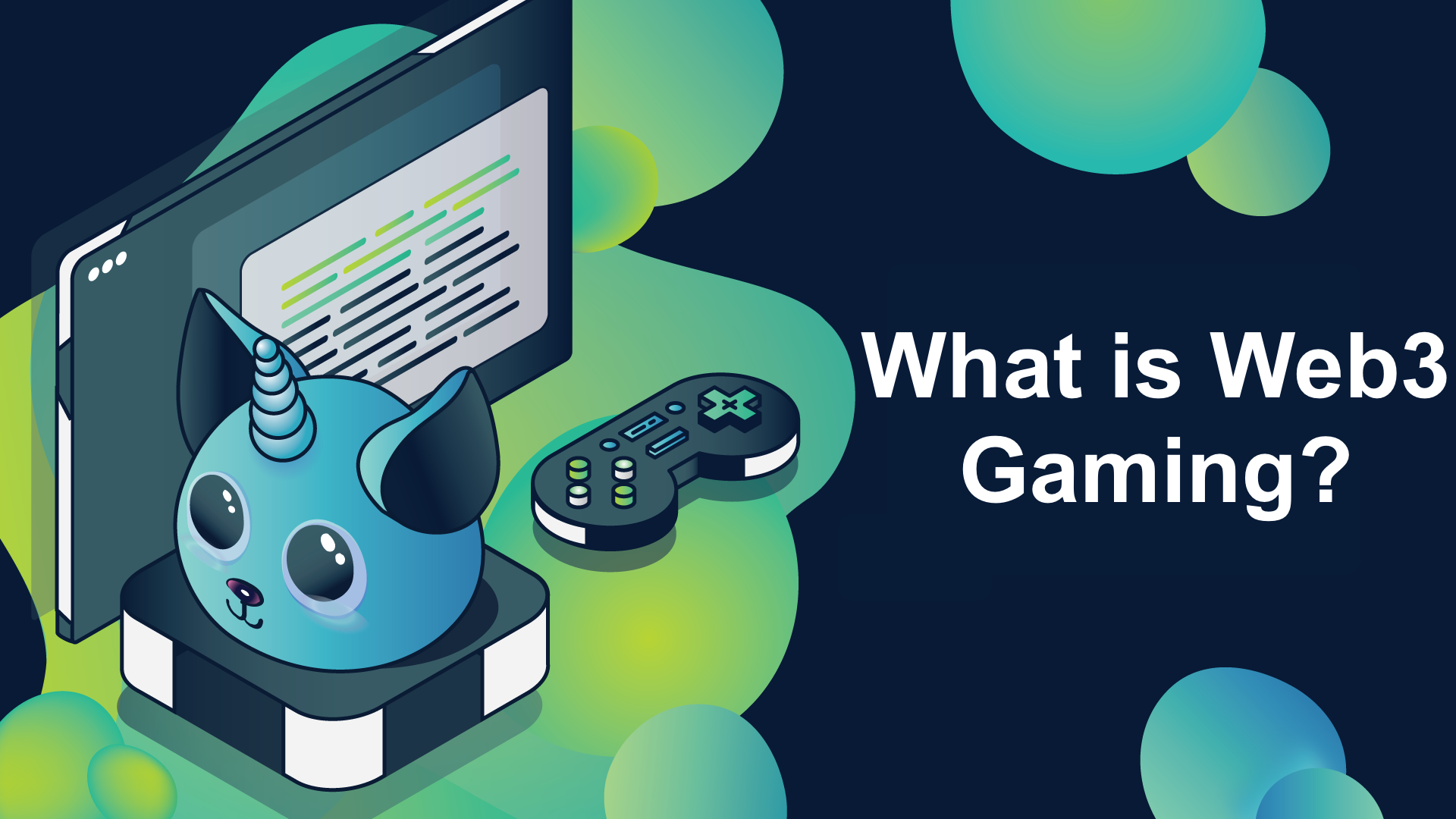
To make better sense of this, let’s explore some key components of the Web3 gaming industry:
- Blockchain Networks: One of the defining characteristics of Web3 games is that they are based on blockchain networks like Ethereum, BNB Smart Chain (BSC), and Polygon. This makes them decentralized, removing the single point of failure that many conventional games have. As a result, Web3 games allow for greater transparency, security, and user control.
- Cryptographic Tokens: In the Web3 gaming industry, non-fungible tokens (NFTs) represent items, characters, and other digital assets. Also, many Web3 games feature native cryptocurrencies and use them for governance, staking, in-game transactions, and more.
- Smart Contracts: Smart contracts are basically programs running on blockchain networks. Furthermore, these contracts execute when predetermined conditions are met. Web3 games typically leverage this technology to allow users to manage, transfer, and trade in-game assets without intermediary involvement.
- DAOs: A DAO – short for ”decentralized autonomous organization” – refers to the governing body of a decentralized application (dapp), protocol, Web3 game, or other blockchain-based platforms. Within the Web3 gaming space, these organizations provide a player-driven ecosystem where communities can weigh in and vote on how platforms will move forward.
Nevertheless, that gives you an overview of what Web3 gaming entails. In the next section, we’ll examine the differences between Web2 and Web3 gaming!
Web2 vs. Web3 Gaming
Web2 gaming refers to the conventional industry you’re likely already familiar with, where you’ll find well-known games like World of Warcraft, Counter-Strike, League of Legends, etc.
So, how does Web2 differ from Web3 gaming?
Below, we’ll look at four prominent differences between these two spaces:
| Web2 vs. Web3 Gaming | ||
| Web2 Games | Web3 Games | |
| Centralized vs. Decentralized | Web2 games are mostly built on centralized servers. | Web3 games are built using decentralized blockchain networks like Ethereum, BSC, Polygon, and others. |
| Ownership & Control | Players typically don’t own their in-game items. Even if they do, they have limited control over them. | Players have complete ownership of their in-game assets as they are represented by cryptographic tokens that can easily be traded and transferred on various exchanges/marketplaces. |
| Payment Model | Web2 games typically feature one-time payment models, subscriptions, or micro-transactions. | Web3 games use digital assets like cryptocurrencies and NFTs, which are managed and traded on decentralized exchanges (DEXs) using smart contracts. |
| Governance/Development | Web2 games are generally governed and managed by a central team of developers. | Web3 games are often governed and managed by DAOs, which allows for a high degree of co-creation between developers and players. |
Web3 Gaming Market Size
The Web3 gaming industry is relatively new; however, it’s already huge! The industry boasts an impressive market size of about $7.89 billion in 2023 and analysts expect this number to grow at a compound annual growth rate (CAGR) of about 68%. As a result, the gaming industry could see a market size of $301 billion by 2030!

This expected growth clearly highlights the potential within the Web3 gaming industry. Because of this, it might prove a lucrative endeavor to build your own Web3 games. If this is your ambition, join us in the ”How To Build Web3 Games…” section further down below, where we’ll introduce you to Moralis’ industry-leading Web3 API suite!
Web3 Gaming and Crypto
Cryptocurrencies play a vital role within the Web3 gaming industry, and many games feature their own tokens. These cryptocurrencies fundamentally change how games create, exchange, and distribute value. Below, we’ll look at five examples of how cryptocurrencies are used in Web3 games:
- In-Game Transactions: Cryptocurrencies are typically used as a medium of exchange in Web3 games. As such, crypto ensures fast, secure, and borderless transactions, allowing users to purchase items, trade assets, pay for subscriptions, and more.
- Play-to-Earn (P2E): P2E is an innovative model that rewards players with crypto tokens for in-game achievements and gameplay. This is a significant shift from conventional gaming models, offering the average player a chance to earn money while gaming.
- Governance and Voting: In many Web3 games, the platform’s native currency usually doubles as a governance token, allowing holders to participate in decision-making processes regarding the platform.
- Staking: Some games also allow users to stake their tokens in return for rewards or to enhance their in-game assets.
- Facilitating a Decentralized Economy: Cryptocurrencies provide a player-driven economy where the value is determined by the community and market dynamics rather than the game’s developers.
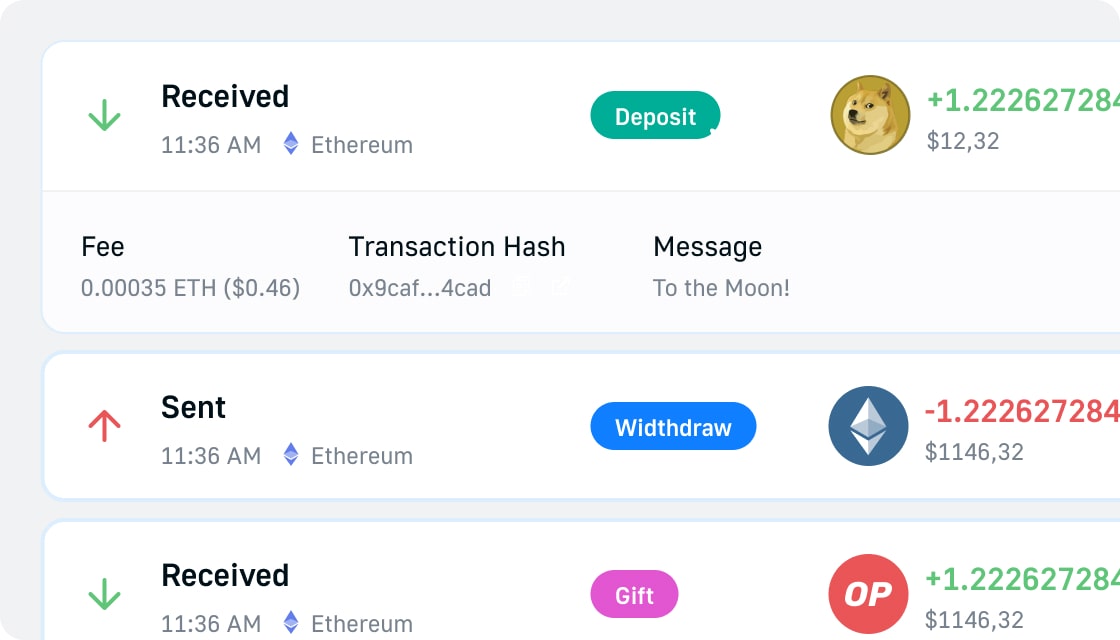
That gives you an overview of what Web3 gaming entails. In the next section, we’ll dive into a list of Web3 games!
Web3 Games List
Now that you have familiarized yourself with the ins and outs of the Web3 gaming industry, you might be looking for some prominent Web3 games. If so, then you’re exactly where you need to be. In this section, we’ll list 25 popular and well-established Web3 games:
- Illuvium
- Axie Infinity
- CryptoKitties
- Tryhards
- The Sandbox
- Decentraland
- Aavegotchi
- Pixels
- Splinterlands
- Sweat Economy
- Alien Worlds
- Nine Chronicles
- Star Atlas
- DeFi Land
- Sunflowerland
- Aurory
- Blocklords
- Farmers World
- SuperWalk
- Upland
- Benji Bananas
- PlayMining
- SecondLive
- Wombat Dungeon Master
- Era7: Game of Truth
In the following subsections, we’ll dive a bit deeper into the top three platforms on the Web3 games list above!
Illuvium
Illuvium has been in development since 2020, but it was finally released about three years later, in November 2023. Illuvium is often referred to as the first AAA game on Ethereum, marking a significant milestone within the Web3 gaming space!
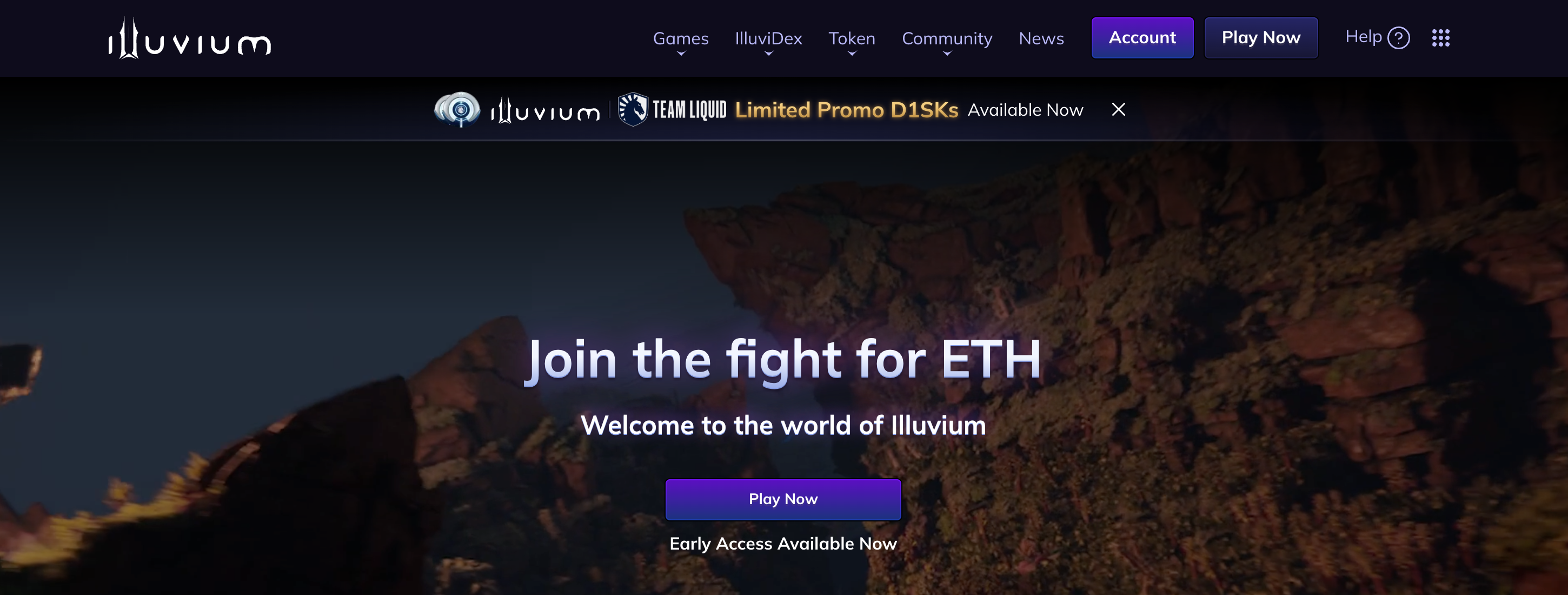
But what is Illuvium?
Illuvium is a 3D open-world, role-playing fantasy battle game built on the Ethereum blockchain network. The Illuvium world is inhabited by creatures called “Illuvials” that can be captured by players who beat them in battle and nurse them back to health. From then on, they become loyal members of the player’s collection and can be used when battling other players.
Illuvium features a native ERC-20 token called ILV. Holders use this token for yield farming, staking, and governing the Illuvium DAO!
Axie Infinity
Sky Mavis developed Axie Infinity and released the game in 2018. At the time of writing, Axie Infinity is one of the biggest platforms in the Web3 gaming space. It is a Pokemon-like P2E game where players gather, grow, battle, and breed creatures known as ”Axies”. Furthermore, these creatures – along with other in-game assets – are represented by NFTs.
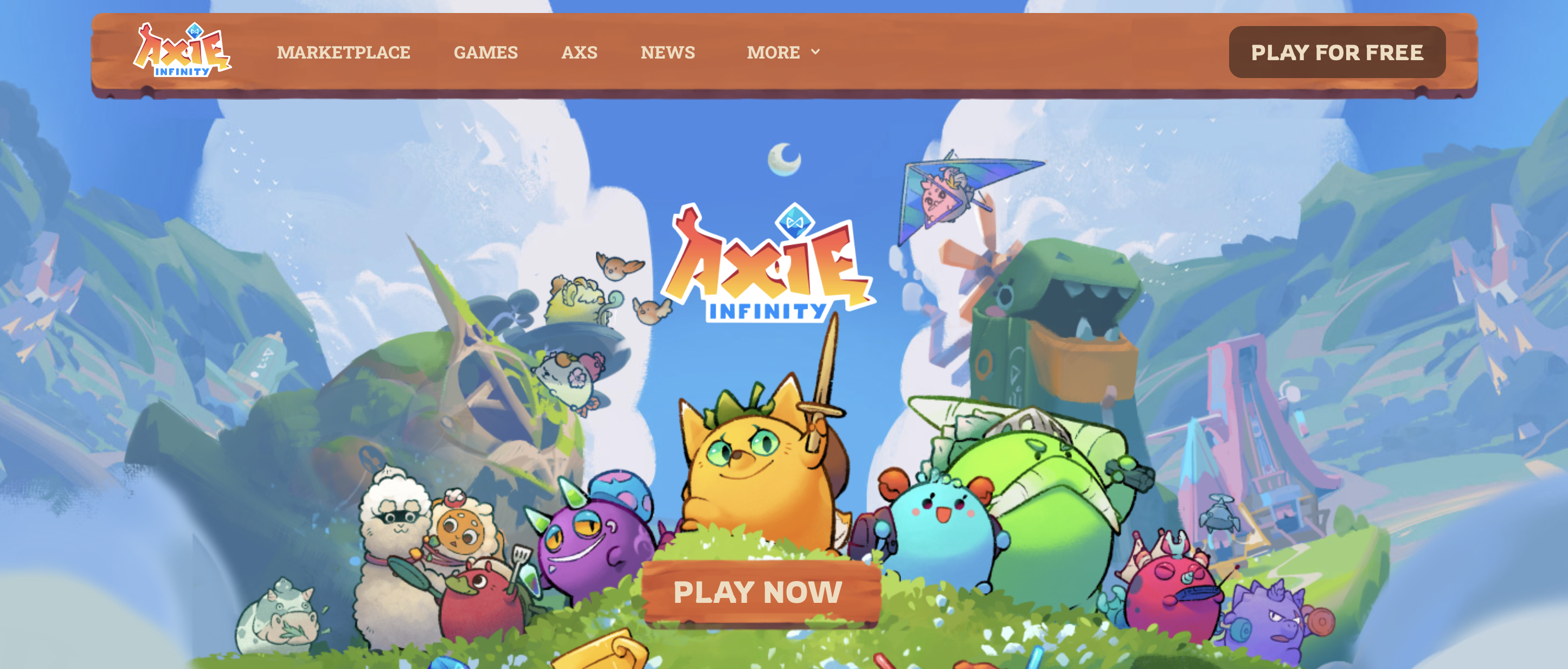
The Axie Infinity game features two central ERC-20 tokens: Axie Infinity Shards (AXS) and Smooth Love Potion (SLP). AXS is the governance token of the Axie Infinity ecosystem, while SLP is a utility token that players can earn by playing the game.
CryptoKitties
CryptoKitties was created back in 2017 by Canadian start-up Axiom Zen, and it’s one of the first and most widely recognized Web3 games. CryptoKitties is an NFT-based game where users can sell, buy, trade, and even ”breed” virtual cats called “CryptoKitties”. The breeding process requires two NFT tokens, and the result is a new NFT with unique traits from its lineage.
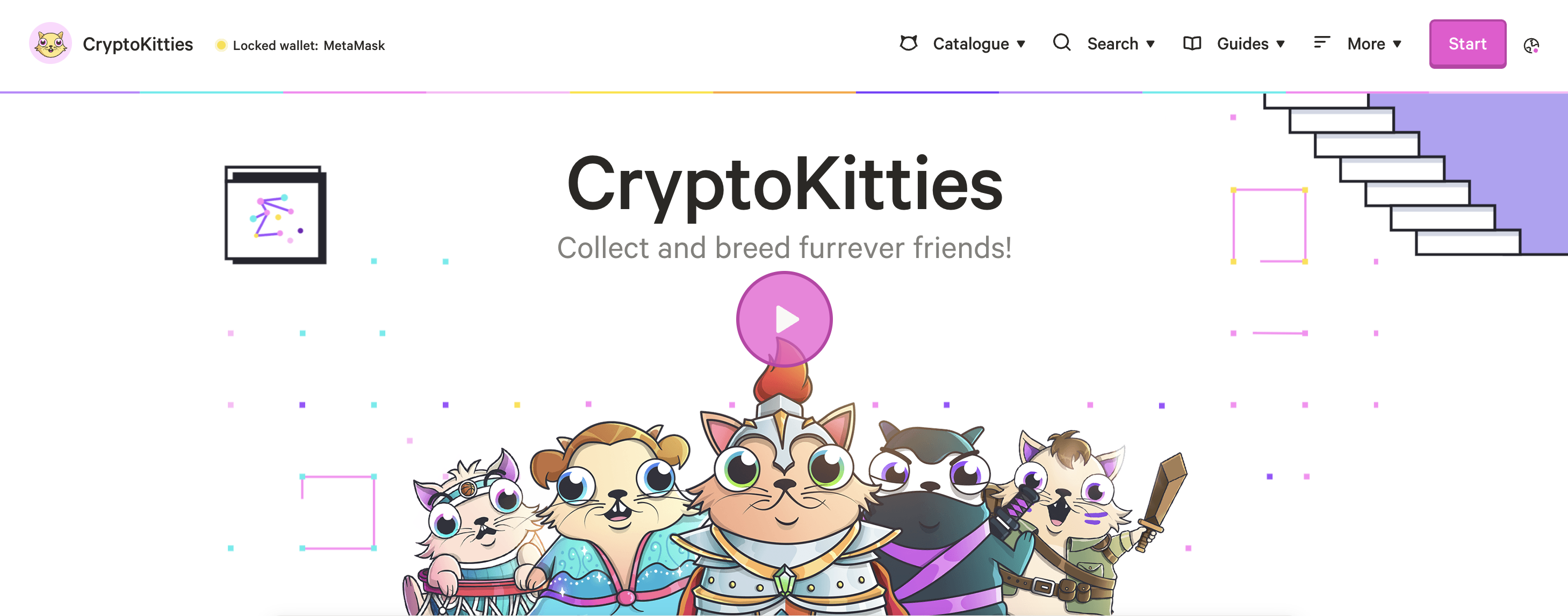
The popularity of CryptoKitties can be highlighted by the extreme amounts that some of these NFTs have been sold for. For instance, one famous example is Dragon, which is a CryptoKitty that sold for 600 ETH or about $170,000 at the time of the transaction!
That gives you a brief overview of some of the most popular and well-known Web3 games. If you want to explore other projects, make sure to visit Moralis’ dapp store: Web3 Wiki. With this tool, you can find a list of Web3 games, new DeFi and NFT dapps, and much more.
Now, if you want to build your own Web3 games, make sure to join us in the next section as we introduce you to Moralis’ Web3 API suite!
How to Build Web3 Games – Introducing Moralis’ Web3 API Suite
With the remarkable growth potential of the Web3 gaming industry, you might find it exciting to build Web3 games yourself. If this is the case, we highly recommend checking out Moralis!

Moralis is an industry-leading Web3 API provider, and with our premier interfaces, you can build Web3 games and other platforms significantly faster and more efficiently!
In our suite of APIs, you’ll find interfaces for multiple use cases, giving you everything you need to build games. To give you a few examples, you’ll find three APIs below:
- NFT API: Moralis’ NFT API is the ultimate tool for NFT data, supporting more than three million collections across all the biggest blockchains, including Ethereum, BNB Smart Chain (BSC), Polygon, and many others. With this interface, you can seamlessly integrate NFT metadata, transactions, price data, etc., into your gaming ecosystem with only single lines of code. For instance, see how easy it is to fetch the metadata of an NFT with the
getNFTMetadata()endpoint:
const response = await Moralis.EvmApi.nft.getNFTMetadata({
"chain": "0x1",
"address": "0xb47e3cd837dDF8e4c57F05d70Ab865de6e193BBB",
"tokenId": "1"
});
- Wallet API: The Wallet API is the perfect tool if you want to integrate wallet functionality into your games. With only a single API call, you can effortlessly get wallet balances, track in-game NFT transfers, and much more. For example, this is how easily you can fetch the NFT balance of a wallet with the
getWalletNFTs()endpoint:
const response = await Moralis.EvmApi.nft.getWalletNFTs({
"chain": "0x1",
"address": "0xff3879b8a363aed92a6eaba8f61f1a96a9ec3c1e"
});
- Token API: Moralis’ Token API is the ultimate tool if you’re looking to integrate real-time token prices, wallet balances, transfers, etc., into your Web3 game. What’s more, this API supports every single token across ten+ EVM chains. Here’s an example of how easy it is to fetch the price of a token with the
getTokenPrice()endpoint:
const response = await Moralis.EvmApi.token.getTokenPrice({
"chain": "0x1",
"address": "0x7d1afa7b718fb893db30a3abc0cfc608aacfebb0"
});
Read our Web3 API documentation or check out the Web3 API page to learn more about the interfaces above!
Summary: Web3 Gaming Explored – Full Web3 Games List
In today’s article, we kicked things off by exploring the ins and outs of Web3 gaming. In doing so, we learned that it refers to games integrating decentralized technologies to offer a more secure and player-centric experience! This includes blockchains, smart contracts, cryptocurrencies, etc.
We also dove into the market size of the Web3 gaming industry, where we discovered that it’s almost $8 billion in 2023. However, we also learned that the market can potentially exceed a staggering $300+ billion by 2030.
From there, we also provided a list of 25 popular Web3 games, where we explored three prominent platforms in particular:
- Illuvium
- Axie Infinity
- CryptoKitties
Lastly, to top things off, we dove into Moralis’ Web3 API suite. In doing so, you discovered that you can build your own Web3 games faster and more efficiently with Moralis’ APIs!
So, if you liked this article, consider checking out more content here on Moralis. For instance, check out our Holesky faucet guide or discover the best crypto exchange API for developers. Also, if you have ambitions to build your own NFT game, don’t forget to sign up with Moralis. Moreover, you can create your account without paying a dime, and you’ll get instant access to our premier Web3 APIs!
